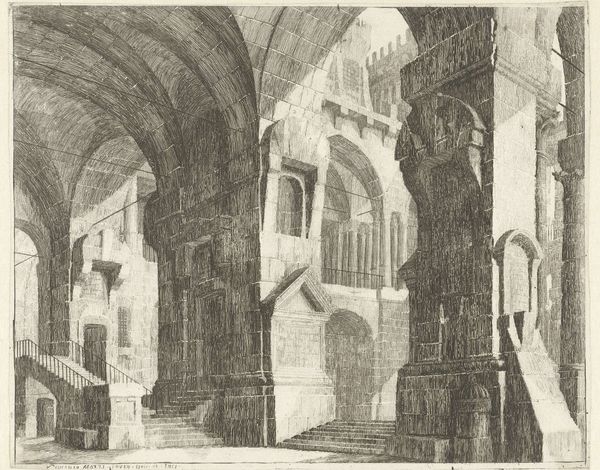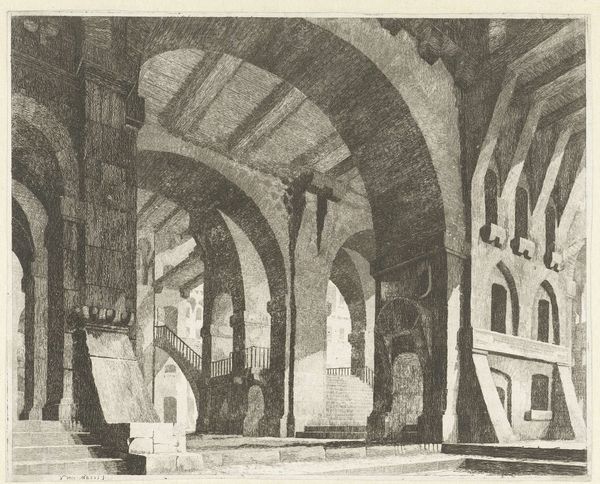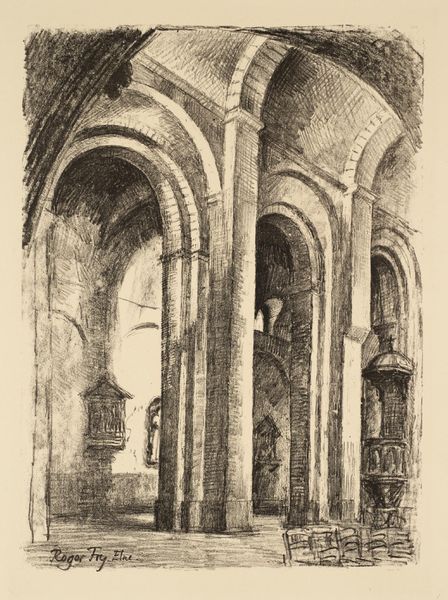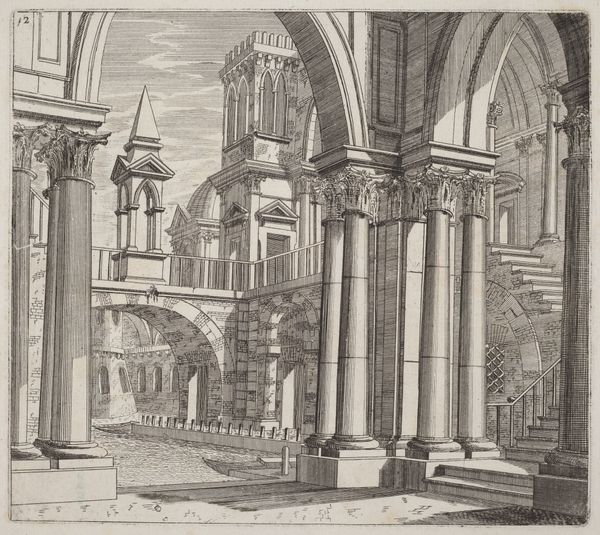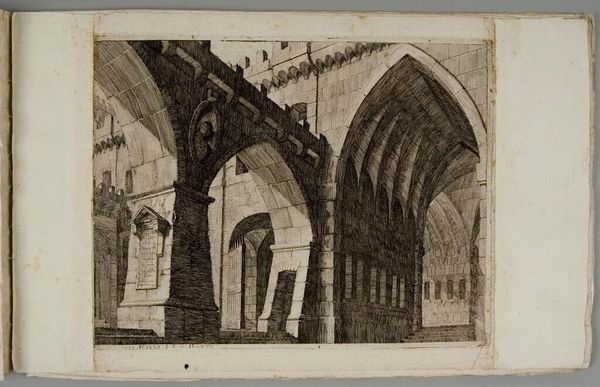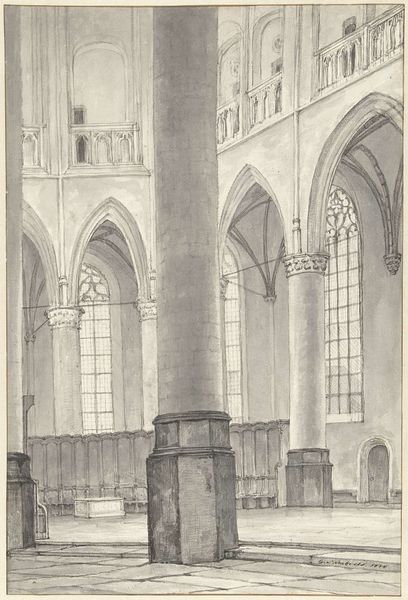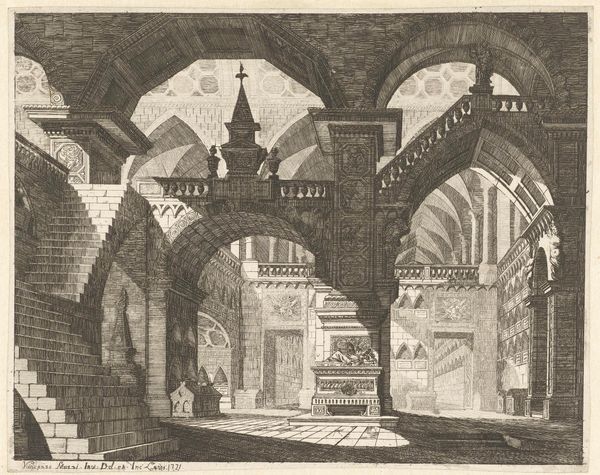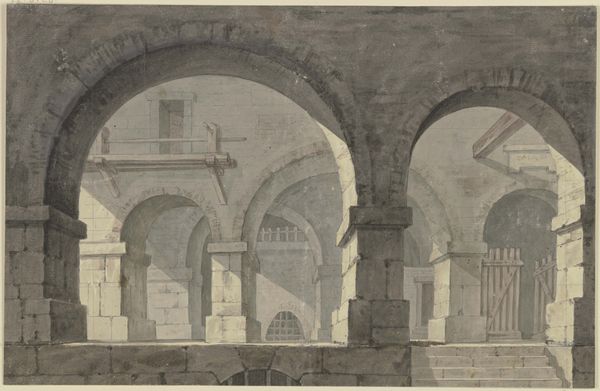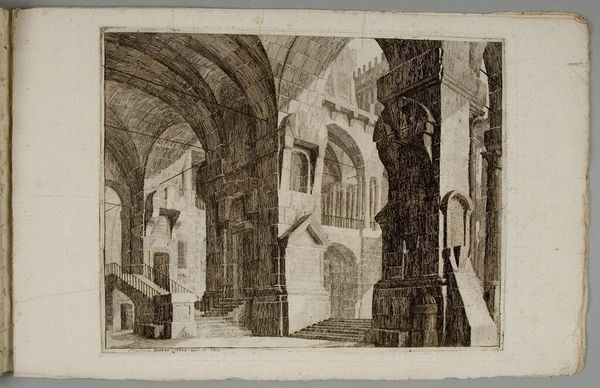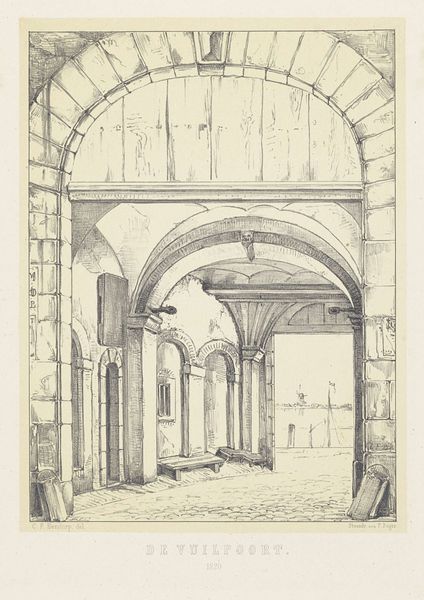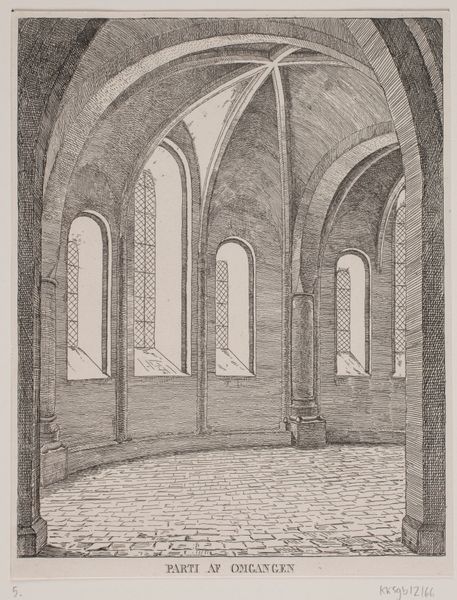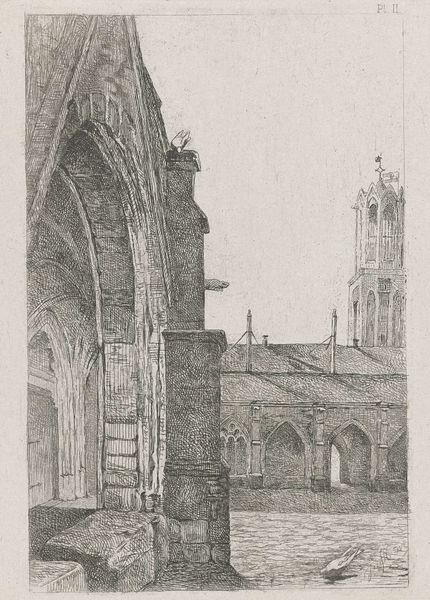
Dimensions: height 215 mm, width 268 mm
Copyright: Rijks Museum: Open Domain
Vincenzo Mazzi made this print of a castle courtyard sometime in the 18th century, using etching techniques. The seemingly infinite parallel lines bring out the qualities of the stone masonry of the castle. Consider how an etching is made: the artist covers a metal plate with a waxy ground, then scratches an image into it with a needle, exposing the metal. The plate is then immersed in acid, which bites into the lines, creating grooves. After the plate is inked, the surface wiped clean, and the print pulled, the ink remains only in those incised lines. Mazzi uses this process to great effect to create a sense of depth, and highlight the monumental architecture. But the print is not just a record of the architecture, it also serves as a reflection on the labour of constructing the castle and the painstaking work involved in its creation. Thinking about the materials and processes involved—both in the making of the castle and the making of the print—gives us a fuller appreciation of Mazzi's work, blurring the lines between craft, design, and fine art.
Comments
No comments
Be the first to comment and join the conversation on the ultimate creative platform.
